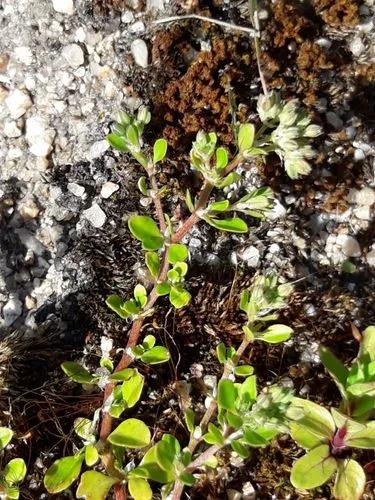Popular for its bushy growing habit, Cereus hexagonus is a tree-like cactus that starts branching right from the base. Its narrow and erect body has made this prickly greenie a popular choice among many amateur and professional gardeners.
Lady of the Night Cactus Care
Cereus hexagonus



Commonly known as Blue Cereus and Lady of the Night Cactus, Cereus hexagonus is a prickly member of the Cactaceae family. Growing in the wild, this cactus species can be found in Ecuador and Venezuela. Cultivated in home gardens, this plant can be grown in 9-11 USDA hardiness zones. The potted Lady of the Night Cactus can be cultivated in most parts of the world, provided it receives favorable conditions. Blue Cereus is a tree-like cactus that can reach a height of 49 feet (15 m). The plant has 4-7 thin ribs that reach 1-2 in (3-5 cm) in width. The Cactus is deep-green in color with the thorns starting as brown and becoming lighter with age. The thorns are around 2 in (5 cm) long. When summer comes, Lady of the Night Cactus produces spectacular white flowers that reach 8-10 in (20-25 cm) in height, followed by light-red, egg-shaped fruits.
How to Care for the Plant

Water

Water Blue Cereus cactus when the soil has dried out completely. It’s important not to overwater succulent plants as they accumulate moisture in the flesh, not roots. Give your prickly greening a drink once a week in summer, and reduce hydration to 2-3 times a week during colder periods.

Pruning

It’s not a common practice to prune Blue Cereus grown indoors; however, you can practice it for propagation. Spring is the best time for pruning.

Fertilizer

It would benefit from a balanced cacti-specific water-subtle fertilizer diluted to the ¼ recommended dose. Feed your greenie once a week during the spring-summer growing season.

Sunlight

Just like most cacti, Cereus hexagonus enjoys full-sun exposure. Keep it near a southwest-facing window to make sure the plant receives 6-8 hours of direct sunlight daily.

Soil

Well-draining, sandy, and nutrient-poor soil is what the Cactus enjoys the most. It’s recommended to plant it in a growing medium with 6-7 pH range and amend soil drainage by mixing in some sand, rocks, and perlite.

Propagation

Stem cutting is the best way to propagate Lady of the Night Cactus. Simply cut a brunch of the current year’s growth at 45-degree angle. Leave the cutting for 2 days to let the callus emerge, and put it in a well-draining potting mix. Give a new greenie a regular drink to let it enroot.

Temperature

It’s best to keep Lady of the Night Cactus in 68-95ºF (20-23ºC) temperature range. The plant can tolerate no lower than 50ºF (10ºC); however, it’s recommended to keep the Cactus away from temperature fluctuations.

Container

Choose a container that is a bit bigger than the plant’s root ball. It’s recommended to opt for a pot made of organic materials like clay or terra cotta, which would aid in root aeration. Additionally, make sure the pot has at least one drainage hole to let excess water flow out easily.

Fun fact

Growing in the wild or outdoors in the same area, Lady of the Night Cacti bloom simultaneously. The flowers open at night and begin to close when the sun rises.

Popularity

1,473 people already have this plant 73 people have added this plant to their wishlists

Common pests

Grown indoors, Blue Cereus, is susceptible to scales. In case you spot pest infestation signs like white coating on the plant’s stalk, treat the Cactus with a neem oil or insecticide.

Frequent diseases

Cereus hexagonus can fall victim to root rot and fungal infection caused by overwatering. If the plant displays wilting and rotting signs, replant it with fresh soil and remove all the infected root parts. Treat the Сactus with a fungicide and maintain an appropriate watering routine in future.

Botanist’s tips

Discover more plants with the list below
Popular articles






